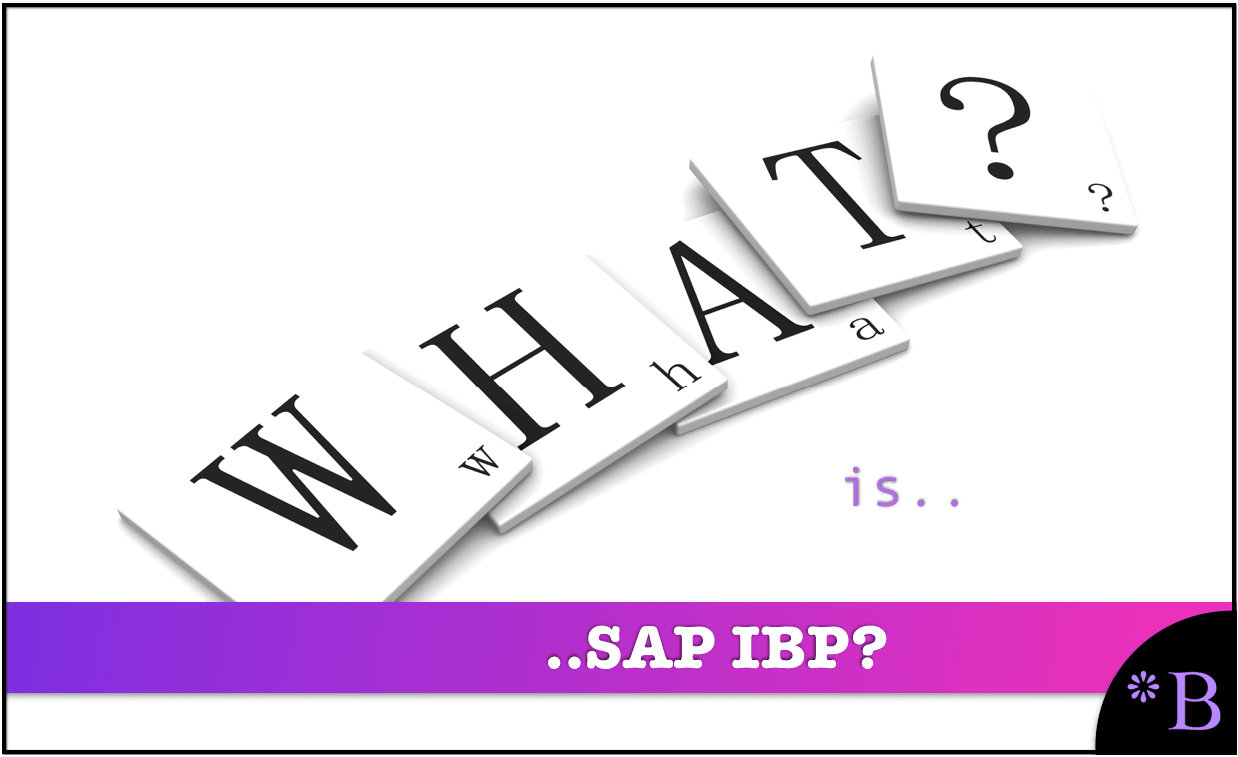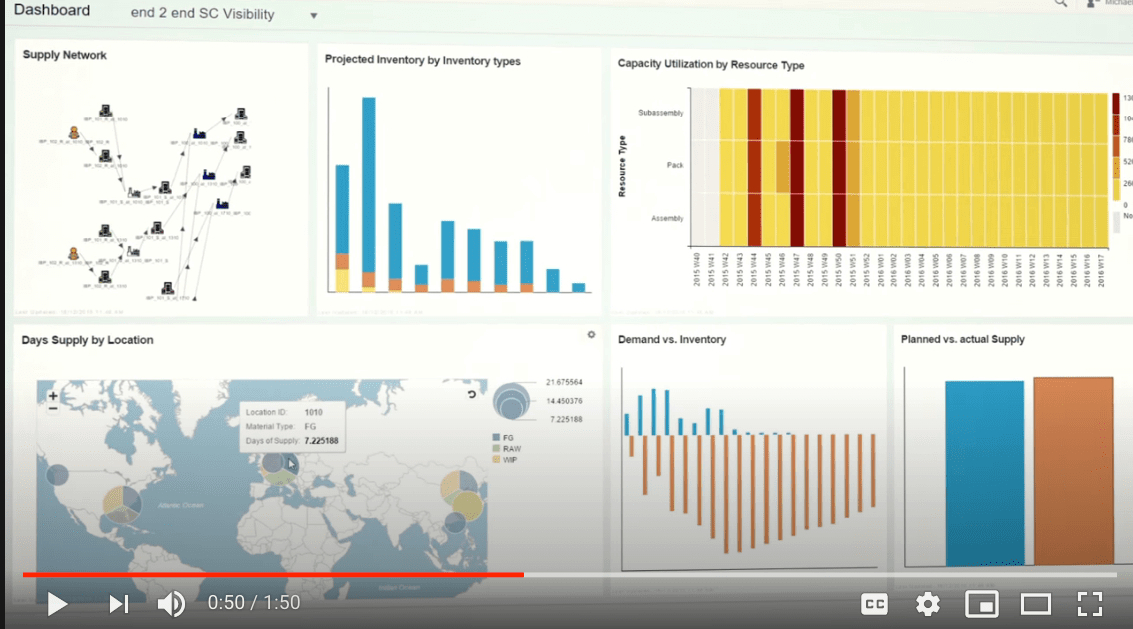What is SAP IBP?
Executive Summary
- SAP IBP is SAP’s replacement for APO…sort of.
- We cover IBP and its background.

Video Introduction: What is SAP IBP?
Text Introduction (Skip if You Watched the Video)
SAP IBP is SAP’s attempt to replace APO. For whatever reason, SAP decided that it needed a new solution — and this was supposedly an incremental solution, which began with S&OP. One of the first things that IBP has generated is bad articles about IBP on the Internet. In reading through IBP articles rated highly in Google, it was shocking to read the low quality of the articles that clearly had zero integrity and zero interest in communicating anything true. Many of these articles contained erroneous information not only about APO and IBP but about planning in general. You will learn about SAP from an independent perspective, not an entity that is merely lying about IBP to sell IBP or IBP consulting services.
Our References for This Article
If you want to see our references for this article and other related Brightwork articles, see this link.
Notice of Lack of Financial Bias: We have no financial ties to SAP or any other entity mentioned in this article.
S&OP or Full Planning Solution?
If one reads SAP’s IBP material is confusing as to IBP’s scope. The concept was that IBP would be just S&OP to begin but later grow to encapsulate the planning that exists in the DP, SNP modules at least. GATP and PP/DS have been moved over to S/4HANA, or at least partially. This means that the intent is to keep IBP at a high level of abstraction than SAP APO.
This is a video produced by SAP on IBP. Some of it is educational, but nothing from SAP can be believed without first being fact-checked. No SAP sales rep or SAP consulting firm is trying to provide SAP customers with an accurate view of IBP.
SAP’s Claims Around IBP
Here are some claims by SAP about IBP. Let us review each of these to determine its reality and usefulness.
Fulfill future demand profitably with real-time supply chain management.
This statement does not mean anything. IBP is a planning application, which is not related to “real-time” supply chain management. The real-time part of supply chain management is doing things like expediting or processing recommendations.
Powered by in-memory computing technology within SAP HANA, the SAP Integrated Business Planning for Supply Chain (SAP IBP for Supply Chain) solution supports sales and operations; demand, response, and supply planning; and inventory optimization.
HANA powers IBP. However, there is no reason why this should do much for the performance of IBP or set it apart from other systems. HANA is optimized for analytics performance, but even here, there is no evidence that HANA outperforms competing databases.
Cloud deployment
Probably not.
When SAP recommends its HEC, the HEC provider will be hosted, but it won’t be multitenant, and it won’t be the cloud. Being cloud requires multitenancy, and several other characteristics, including flexible cancellation terms.
Real-time scenarios and simulation
The term real-time is not useful or instructive, but IBP will be able to do simulation. This was a significant weakness of APO.
Social collaboration
This means multiple people can log into the application and view or make changes. APO offers this as well.
Powerful predictive analytics
SAP has been pushing predictive analytics for years and then converted what they had been saying about predictive analytics and shifted it over to Leonardo. We cover this issue in the article How to Understand SAP’s Strange Predictive Analytics for ML.
Offer a unified, intuitive user experience with SAP Fiori and planning and simulation capabilities based on Microsoft Excel.
Fiori is not a particularly good or impressive UI. But Excel integration is huge in IBP.
Optimize resource efficiency by creating supply plans based on prioritized demands, allocations, and supply chain constraints.
This is nearly always easier said than done. This was a significant area of weakness in APO. However, IBP has far less constraint granularity now that PP/DS has been removed and is over in S/4HANA.
Gain end-to-end visibility of your supply chain, decision support, and fast corrective action through integration with SAP Supply Chain Control Tower.
The term control tower does not really mean anything. Many vendors continuously promote it. Control towers are announced with great fanfare and proposed to give planners “total visibility,” but I have yet to see one, including IBPs that accomplishes this.
Notice this video from SAP. It proposes the control tower. It has a woman with a smooth voice, and most of it is a video of physical assets in the supply chain. However, if we check the screenshots, no control tower is apparent.

Here is one of the screens that are shown in the video above. Let us review each tile.
- The first is a display of the physical network. This is not a view that is particularly helpful to a planner.
- The second tile shows the projected inventory by the type of inventory. This might be good to know, but it is not a “control tower”; it is just a basic analytical graphic.
- The third tile shows the capacity utilization by resource type. It’s a resource screen; these are very common in planning applications, not a control tower.
- The fourth tile appears to show volume per location in a network. This is a “sexy” graphic, but it is not one a planner is likely to use.
- The fifth tile shows demand versus inventory. It is unlikely this would be used. Typically a planner scans rows that compare the units of sales versus the inventory position. Nothing additional or beneficial is being added here, and it gets in the way of having it in a graphical form.
- The sixth tile is really quite a useless comparison tile, that again, would not be used.
Also, what is the point of all of these screens jumbled together? Having these views on one screen does not improve one’s understanding. It decreases it, and these items are not related to each other. This is a screen cooked up for sales, not to be used.
Establish optimal inventory targets that enable you to maximize profits, while leaving a buffer to help you meet unexpected demand.
This is probably not true.
While inventory targets can be set, it is not necessarily true that they are optimal. Sales set service level, and sales guess at what the service level should be. To do this, IBP would have to know the incremental sales from different sales levels, and there is no way for IBP to know this.
Get full demand transparency with short-term, mid-term, and long-term forecasting. Take advantage of best-in-class capabilities for demand sensing and statistical forecasting.
Demand sensing is not a real thing but is a way of falsifying forecast error, as we cover in the article How to Understand Demand Sensing and Demand Shaping Best.
In terms of statistical forecasting, IBP is just offering the same statistical forecasting everyone else is — there is nothing best in class about it.
What is SAP Offering With IBP?
Much of what IBP is offering is just usability through export to Excel. However, it is not necessary to move to IBP to get this functionality. For example, offer support for APO that allows us to add some boosters that improve APO, and that also enable APO to have data exported to Excel and then brought back in from Excel. This service is available at less than the cost of what SAP customers currently pay for SAP support on APO.
Conclusion
IBP is just a generic planning solution in a pretty marketing wrapper. So far, it has not found very much implementation success, and surveys by Lora Cecere have found generally low satisfaction with IBP. Customers should remember that virtually nothing SAP said about APO improving planning at companies came through, and APO became a millstone around the necks of most of the companies that bought APO. In fact, it is little discussed that most of the APO suite is not implementable. I wanted to discuss this in my book for SAP Press, but SAP Press only publishes censored material as they are just a marketing front end for SAP with zero concern for presenting the reality of SAP to readers.
Deloitte and Accenture, and all the other SAP consulting firms repeated the false claims of SAP to their customers. If you look at the current marketing material by the SAP consulting firms, it is just restating the promises they already made with APO, but now with more additions of things like AI.
All of this means IBP needs to be very carefully evaluated before anything is used from the application.